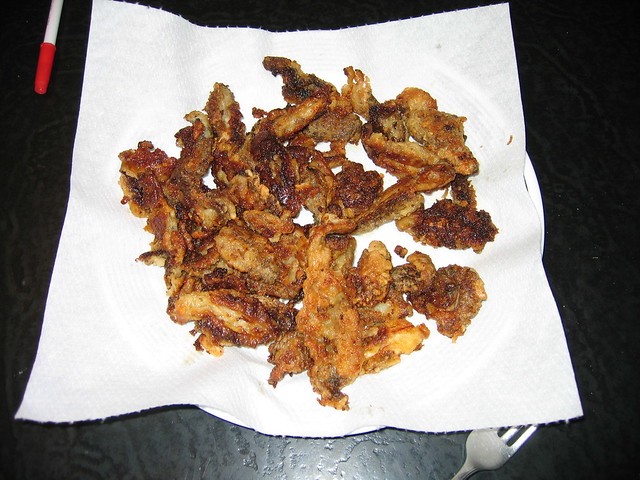Ohio is home to more than 2000 types of wild mushrooms. With their woodsy taste and unique shape, morel mushrooms have long been synonymous with spring. As Jack Czarnecki, author of The Cook’s Book of Mushrooms, said: “The morel is the first mushroom to appear in the mushroom hunting season. Some hunters, with knife in one hand, basket in the other, fortified with a good bottle of zinfandel, venture forth in a state of excitement, which I think is unparalleled with any other time of the season.”
It just so happens that Hocking Hills is an excellent place for finding these special treasures. Here is a brief guide to hunting and eating morel mushrooms.
About Morels
Morel mushrooms go by many names, including “hickory chickens” and the not-so-appetizing “dry land fish.” Their season runs from late March through May, and they are most abundant starting in early April. They have a complex flavor and silky texture. In stores, morels sell for up to about $20 a pound, but they are free and abundant in many areas of Ohio, including Hocking Hills.
Finding Morels
Morels grow most abundantly on east-facing hills; around ash, oak, and elm trees; and in loose, damp soils. Look for them after the spring rains, as well as in areas where you also find moss and fiddlehead ferns—these plants grow in the same conditions as morels. Mushrooms often grow in groups of sorts, so when hunting, comb the ground until you find one and then spread out from there. At the beginning of the season, they are small, so you might want to place a marker and then come back a week or two later when they’ve filled out.
Identifying Morels
Morels are easy to identify, especially later in the season when they are larger. Their distinctive appearance features dark pits and a conical shape, as seen below.
Beware of false morels, which share many features with morels, but are usually redder and do not have the same conical appearance. False morels are toxic, and eating them can cause a variety of unpleasant symptoms.

Cooking and Eating Morels
Morels should be cooked before eating. To clean them, soak the mushrooms in salt water and then dry thoroughly. Start by eating only a small amount at a time, to ensure that the mushrooms you’ve hunted are safe for consumption.
After that, let your foodie side take over! Fried in butter is one of the most popular ways to eat morels, but they are also excellent breaded or battered and fried, in an omelet, in a soup or stew, and in sauces. Basically, you can use them any way you would regular button mushrooms; just expect a stronger, earthier, mushroomier flavor. Epicurious lists 1500 recipes featuring morel mushrooms, from pan sauce to pasta dishes, to sautéed with asparagus.
Morel season is short, so get out there and find them while you can! Before you go, read more about mushrooming in Ohio at the Ohio State Parks website and be sure to check out Ohio State University’s Wild Mushrooms Fact Sheet. Happy Mushroom Hunting!
Photo Credit: “False Morel” by Jason Hollinger [CC-BY-2.0], via Wikimedia Commons; “Fried Morel Mushrooms” by John Morton [CC-BY-SA-2.0], via Flickr


